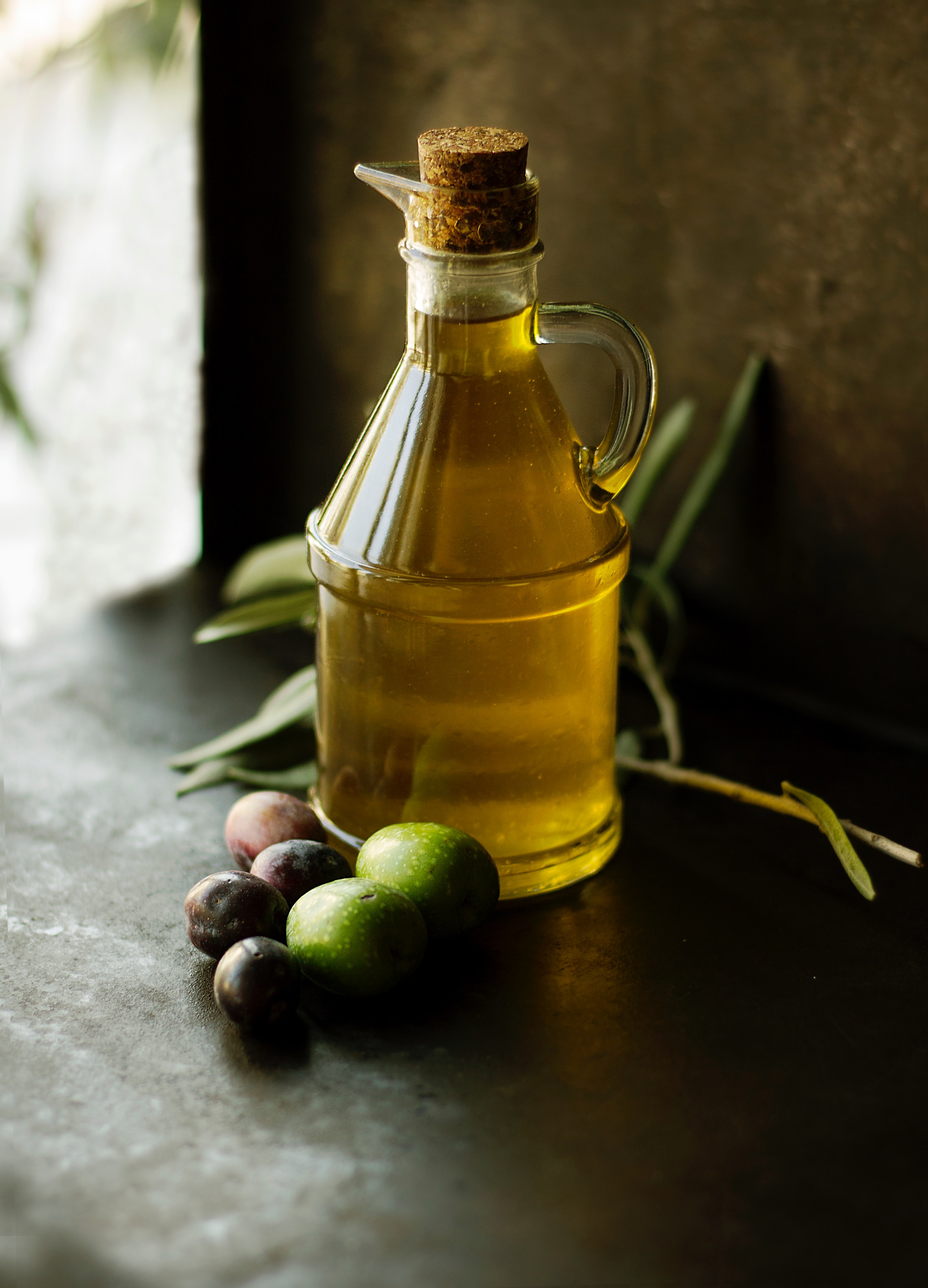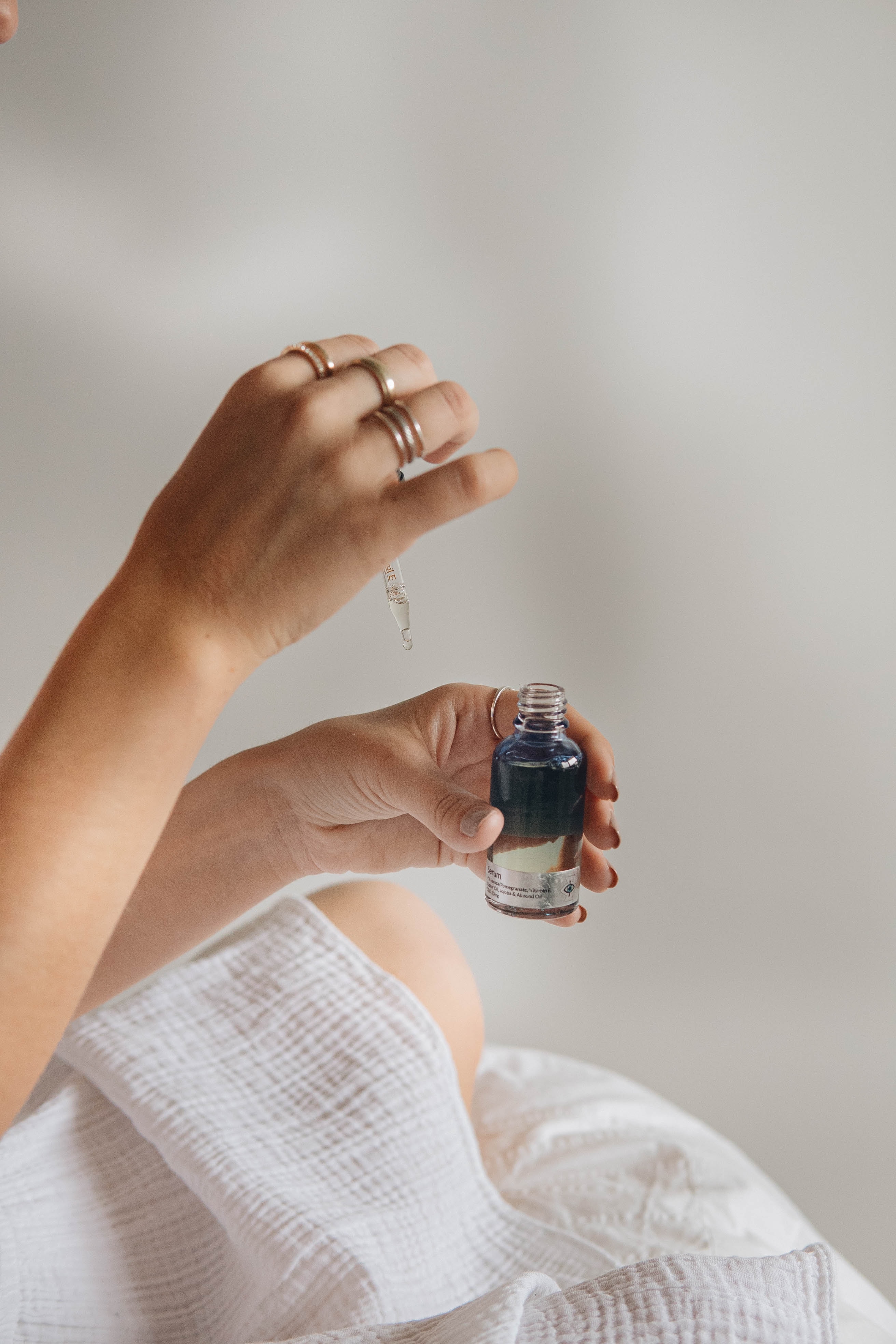While hyaluronic acid may be having its moment in the sun as THE hydrating ingredient, it’s not the first go-to ingredient for hydration. Before the popularization of hyaluronic acid, glycerin was the go-to hydrating ingredient in skincare. In 2014, glycerin was the third most used ingredient in cosmetic formulations. Many formulators use glycerin for skin products because it can penetrate through the skin barrier down to the dermis.
So let’s talk all about how effective glycerin is as a hydrating ingredient and its differences and similarities to hyaluronic acid.
Related Post: 10 Effective Hyaluronic Acid Alternatives
What is Glycerin?
Glycerin, also referred to as glycerol, falls into a category of materials called polyols. Polyols are alcohols that are often the precursor material to make other polymers. Specifically, glycerol is a sugar alcohol naturally present in fatty substances called triglycerides.
It is a very thick substance without color or odor. Despite being a very dense substance, it is a relatively small molecule. In skincare, glycerin and other small molecules can be effective because they can penetrate through the skin barrier.
A scientist named Carl Scheele was the first to isolate glycerol. He also isolated oxygen for the first time! Glycerin is a natural material that is present in plants and animal fats. This was the source of glycerin in many applications. However, through the advances in bioengineering, glycerin is made synthetically today.
Related Post: What are Natural Materials?
What is the Source of Glycerin for Skin and Other Cosmetics?
Glycerin can come from natural and synthetic sources.
Regardless of the origin of the chemical, its structure and properties are relatively identical. Glycerin can be found naturally in any plant or animal that has triglycerides, fats. For natural glycerin, plant-based sources are the most common for skincare products.
Plants oils like grapeseed and olive oils contain glycerin.
Synthetically manufactured glycerin comes from industrial-scale batch processes. The raw materials are reacted together or broken down to make the glycerin molecule. After synthesis, the molecule is isolated and purified.
Cosmetic products are manufactured with synthetic and natural glycerin.

The Function of Glycerin for Skin
In cosmetics, glycerin has several functions. In skincare, glycerin can be a humectant/ skin conditioning agent and viscosity-modifier.
- Humectants are ingredients that attract water molecules. They keep the skin moisturized and, depending on their chemistry and size, have the ability to penetrate through the skin barrier and bring water to the lower layers of skin. Glycerin is one of the humectants that is capable of doing that.
- Ingredients called skin conditioning agents are just moisturizers that can hold water into the skin and act as a water reservoir.
- Glycerin is also a viscosity modifier in formulations because it is a low molecular polymer which means it will be less viscous than high molecular weight hyaluronic acid and some of the other larger molecules.

What Type of Skincare Products is Glycerin Used In?
Glycerin can be used in a lot of different skincare products.
Products that are designed to moisturize benefit from a glycerin and water mixture. Glycerin is a humectant and will hold onto the water molecules to keep skin hydrated longer.
A serum that is formulated with actives can also benefit from glycerin. When glycerin is present in serum, it can carry active ingredients down into the dermis, making them more effective.
A survey conducted by the Personal Care Products Council in 2014 showed that in some topical leave-on products, glycerin was used up to almost 80%, and in wash-off products, it was up to 99%. This shows that glycerin is a commonly formulated ingredient and its benefits and functions are well backed.
Related Post: The Types of Hyaluronic Acid: Is Sodium Hyaluronate Different that Hyaluronic Acid?

Which is Better, Glycerin vs. Hyaluronic Acid
Glycerin and hyaluronic acid have very similar functions in skincare products.
At the same time, glycerin is a bit less versatile than hyaluronic acid because it is only a small molecule. Glycerin can penetrate the skin barrier like low molecular weight hyaluronic acid salts. Still, it cannot sit on top of the skin and create a hydrating layer like higher molecular weight hyaluronic acid.
All in all, both molecules are humectant and have significant benefits for the skin.

2 Comments